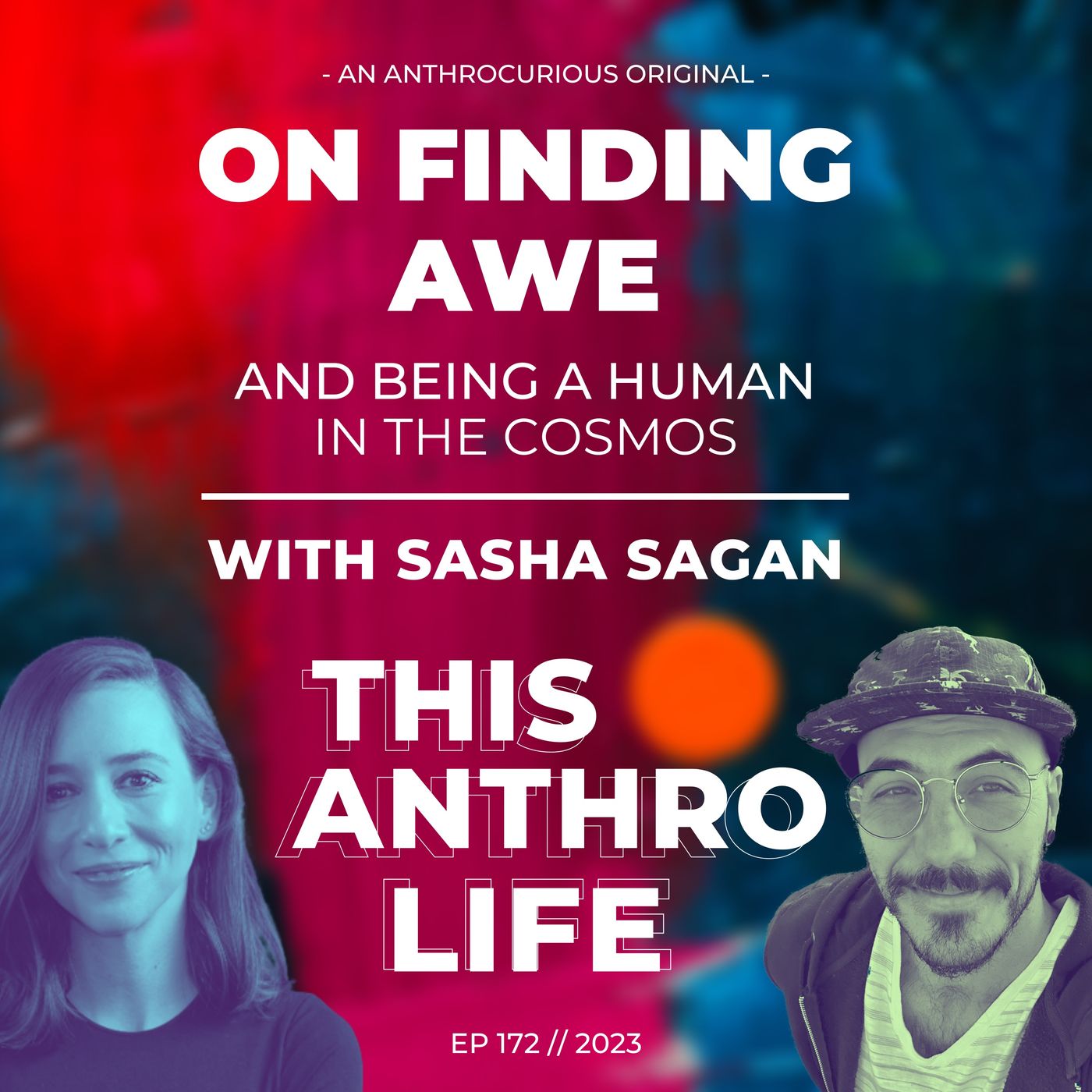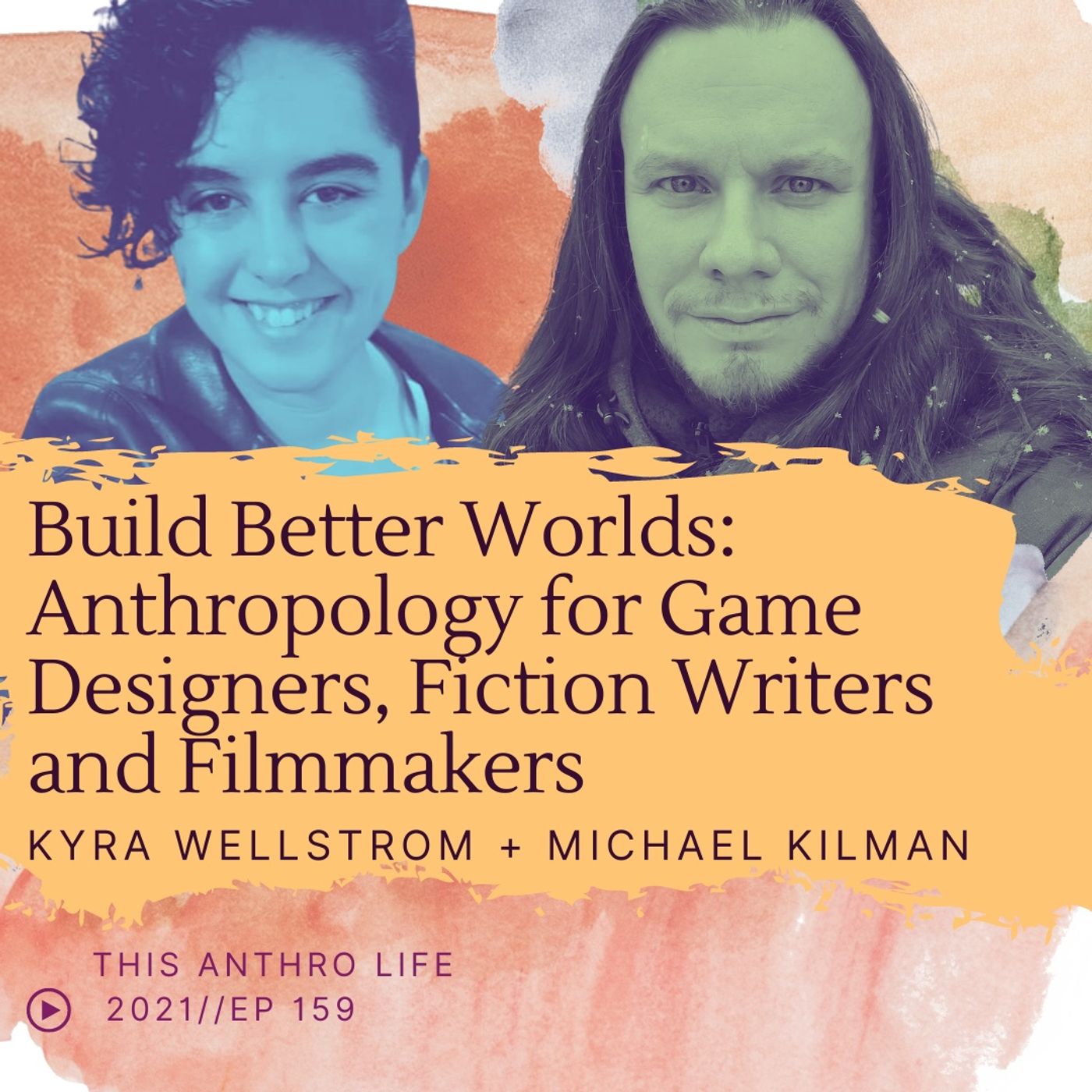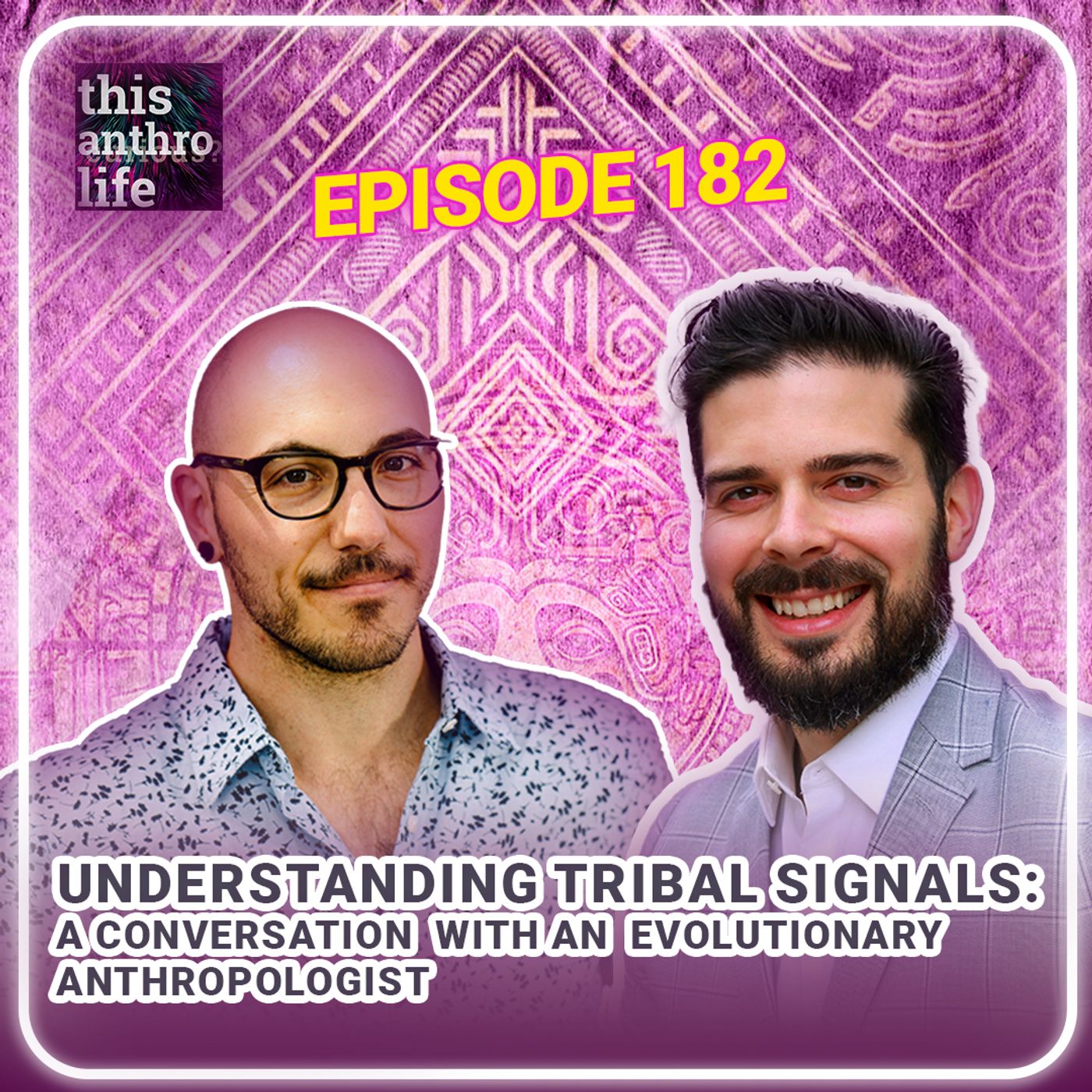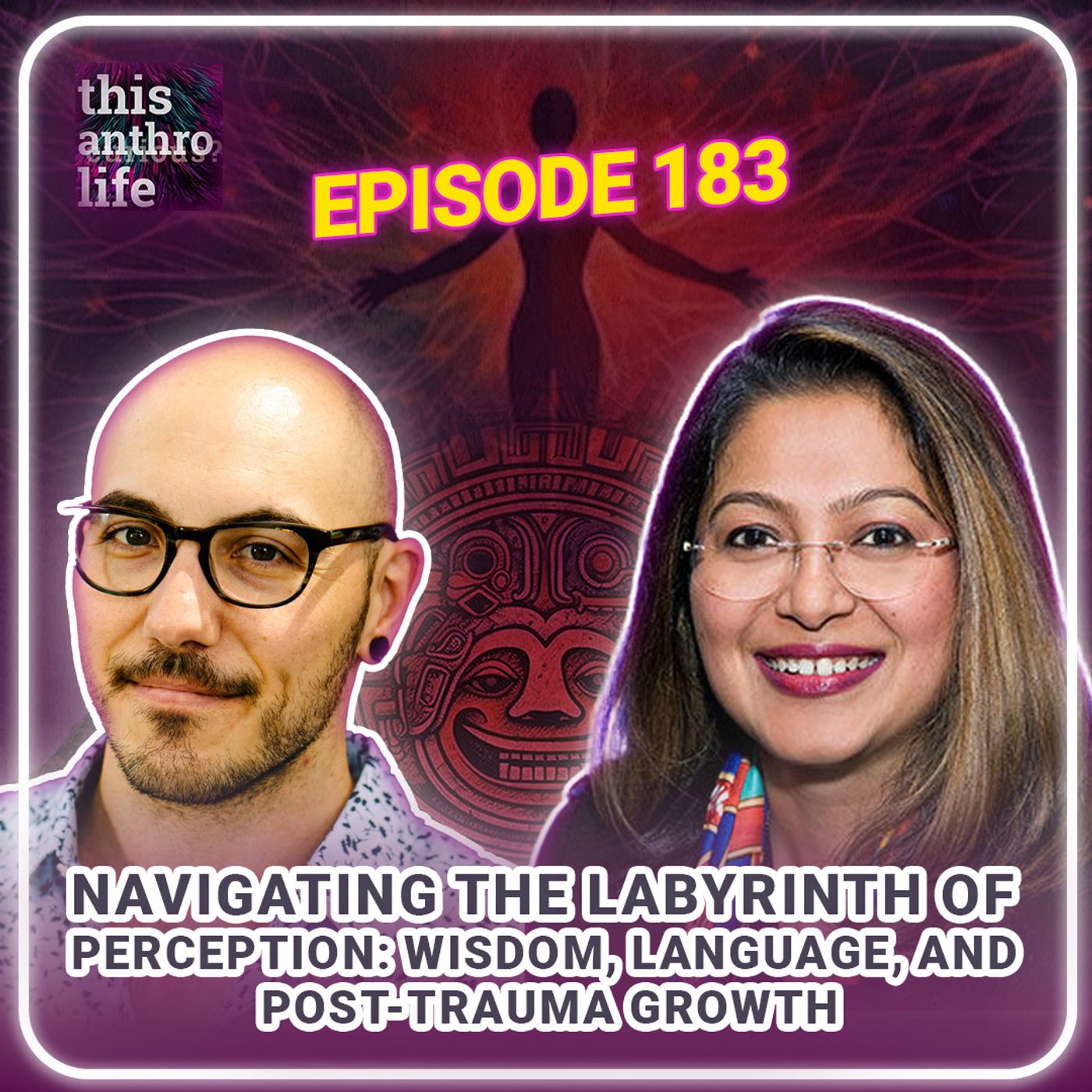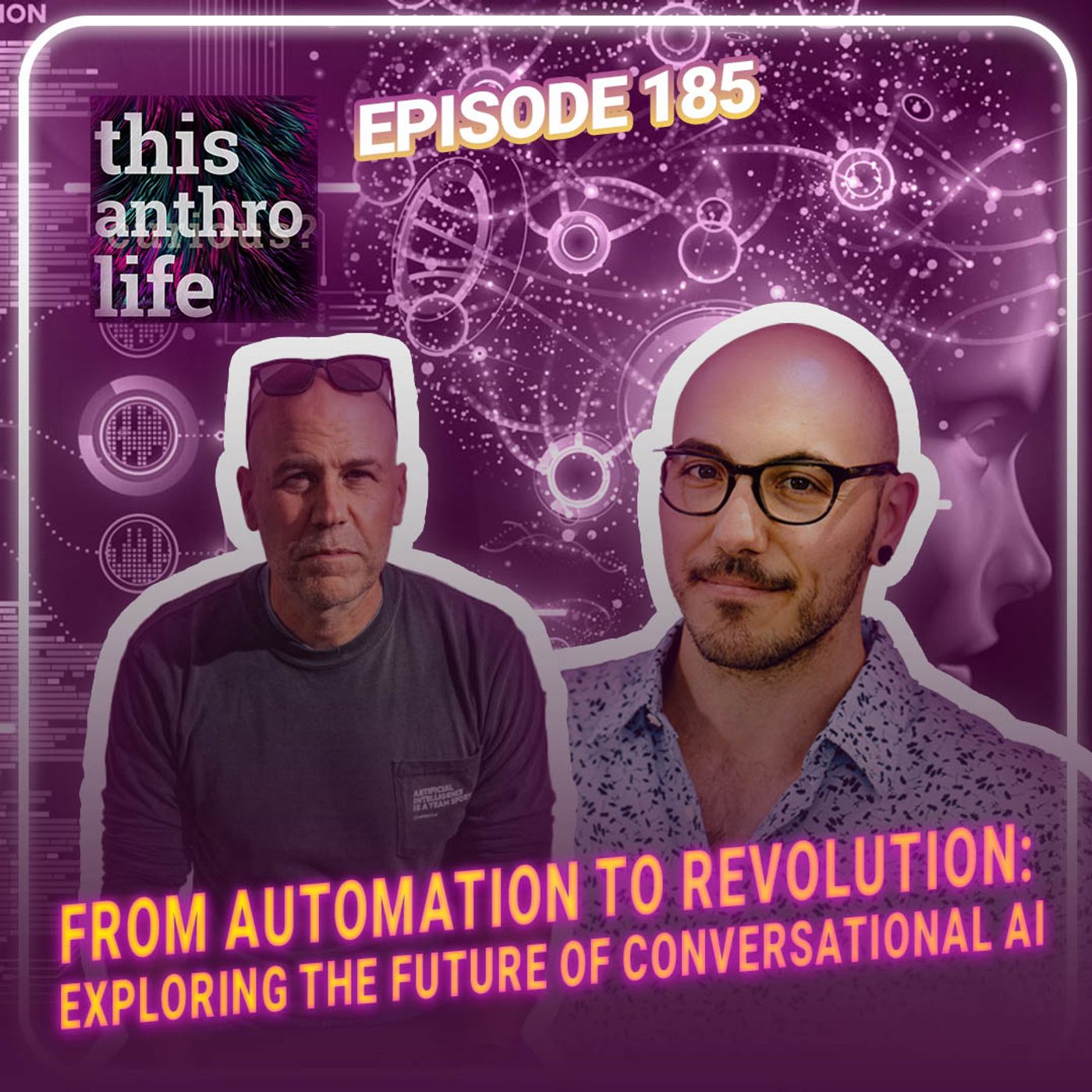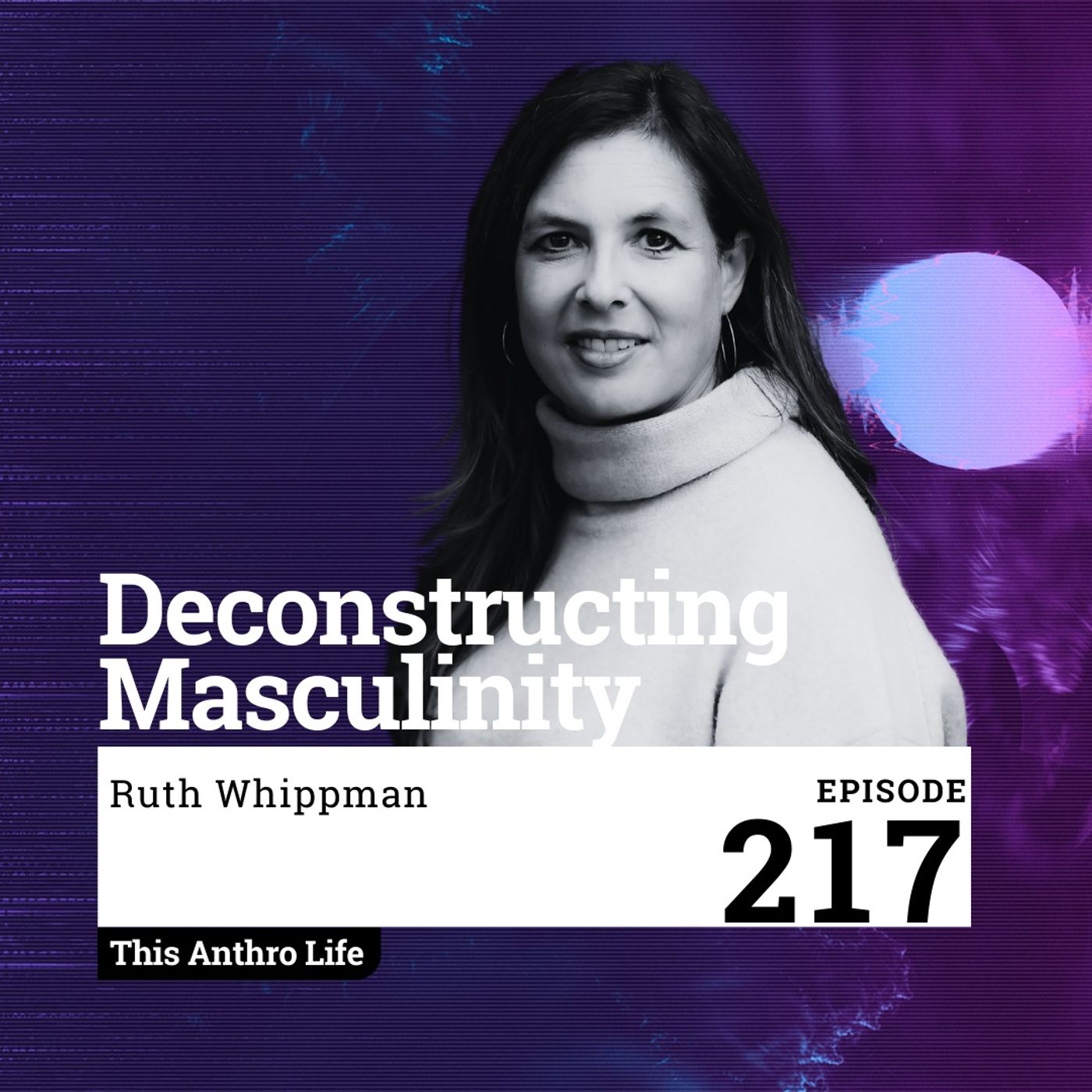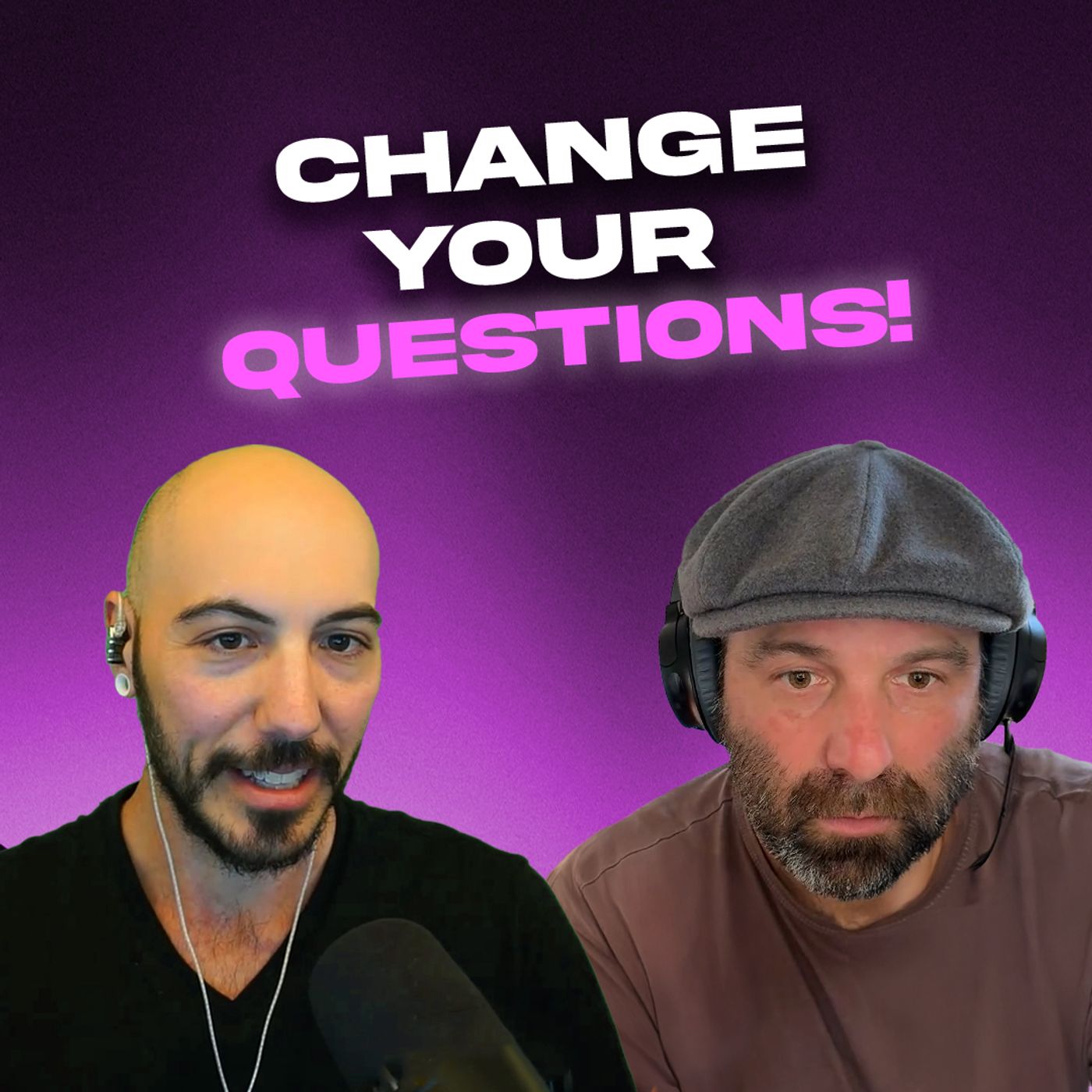More than a Game: Sports, Race, and Masculinity in Diaspora w/ Vyjayanthi Vadrevu and Stanley Thangaraj


In this episode we meet Dr. Stan Thangaraj, an anthropology professor at the City College of New York whose research includes immigration in the U.S, being interviewed by Vyjayanthi Vadrevu, a business anthropologist and ethnographer. Together, the two discuss basketball, community, identity, race relations and so much more. Stay tuned with us as you learn about why race relations are so important and the answers to the following questions:
- What does sports and their global popularity reveal about race relations in the US?
- What can we learn from the merging transnational identities?
- How have the “Black Lives Matter” Movement impacted the nonwhite and nonblack communities?
- What are the politics within the diasporic communities?
- Why is it so important to continue research and teaching about these communities?
Sponsors for this episode:
Check out the world's first Neuromarketing Bootcamp and sign up today with our Affiliate link!
Neuromarketing Bootcamp by Neuroscientist Matt Johnson and Marketing Director Prince Ghuman
Use offer code ANTHROLIFE for $500 off: Affiliate link: https://www.popneuro.com/neuromarketing-bootcamp
And check out Matt and Prince’s episode on neuromarketing on This Anthro Life https://www.thisanthrolife.org/a-neuroscientist-and-marketer-walk-into-a-bar-neuromarketing-and-the-hidden-ways-marketing-reshapes-our-brains-with-matt-johnson-and-prince-ghuman/
Check out our new Medium Blog "Voice and Value": https://medium.com/missing-link
collaborative provocations and stories that get us closer to human and deepen our perspective on society, culture, and our future.
Stanley Thangaraj is an Assistant Professor of Anthropology at the City College of New York (CUNY). His interests are at the intersections of race, gender, sexuality, and citizenship. He studies immigrant and refugee communities in the U.S. South to understand how they manage the black-white racial logic through gender, how the afterlife of colonialism takes shape in the diaspora, and the kinds of horizontal processes of race-making.His monograph Desi Hoop Dreams: Pickup Basketball and the Making of Asian American Masculinity (NYU Press, 2015) looks at the relationship between race and gender in co-ethnic-only South Asian American sporting cultures.
Vyjayanthi Vadrevu is an ethnographer/ design researcher and strategist with a background in anthropology, business development, and nonprofit administration. She works on social impact design projects as well as corporate technology projects, delivering insights to help clients better serve their end users and beneficiaries. Vyjayanthi is also a trained bharatantyam dancer, with additional experience in Odissi, Kuchipudi, Kathak, and West African dance, and uses movement and choreography to connect to the deepest parts of the human experience.
Music: Epidemic Sound
Show notes: Xin Yao Lin, Elizabeth Smyth
Episode art by: Sara Schmieder
--- Send in a voice message: https://anchor.fm/thisanthrolife/message
More than a Game: Sports, Race, and Masculinity in Diaspora w/ Vyjayanthi Vadrevu and Stanley Thangaraj
Adam Gamwell: Welcome to TAL, as always this is Adam Gamwell. If you’ve ever moved states or countries, whether as a kid or even an adult you know how challenging it can be to establish a foothold, to make new friends, and feel like you belong. On top of that, no matter where you move, there’s cultural and social norms, perceptions of ethnicity, race, caste, class and gender to contend with, perceptions and beliefs that likely don’t line up with where you’re from.
And moving can be especially challenging for kids, who may not understand or be aware of such differences and have to contend with them in those most dangerous of places - middle and high school. In these times, it feels crucial to draw on the threads of identity, those things that helped you know who you are from the past, to carry you forward in the present, to help you know where to anchor yourself, where to find new community.
Our guest today, Dr. Stanley Thangaraj, tells us his story, and in particular how sports like basketball, cricket, and wrestling helped him connect life and identity between India and the United States, and what it means for migrant and diasporic communities to have to contend with the often black and white ways American culture tends to treat masculinity and race. Finally he walks us through the ways anthropology helps us understand and nurture the complexity of deeply felt experiences and often unspoken norms, and the power of centering voices often on the margins.
Today’s episode is led by This Anthro Life alum and correspondent Vyjayanthi Vadrevu and is a co-production with our sister project Mindshare, that focuses on helping scholars and public intellectuals spread their voices to larger voices. Hardcore fans may recognize Vyjayanthi as one of the first guests on the podcast to talk about corporate anthropology and doing research in industry. It’s a great episode and we’ll have it linked in the show notes. So I’ll turn it over to Vyjayanthi and Stan.
Vyjayanthi Vadrevu: [00:00:00] Well, it is so good to see you, Dr. Thangaraj, also known as Stan. I hear from your students that you're quite engaging and hilarious in class.
Stan Thangaraj: [00:00:09] Oh well, you know, that's the funniest thing I've ever heard actually, because I've never heard that hilarious part. So there are times where I say stuff and students don't know if they should laugh or shouldn't laugh, they want to laugh, but they're not quite sure what to do. And so at those moments, just the only way, and the only thing you can do is consume the silence and move on to the next stop.
Vyjayanthi Vadrevu: [00:00:36] It's a good method. So let's start with your background. Of course you have such an interesting, rich history, so please enlighten us. Tell us all about that.
Stan Thangaraj: [00:00:47] Yeah. So I am the first person in nearly 150 years along the male line in my family who was not an ordained Christian minister. So my father came to the U.S. in 1980 to [00:01:00] pursue a PhD in theology. And so that was the first moment we came to the U.S. as kids and I came at age six, to Boston.
And in Cambridge,1980 Celtics. Imagine that era had just started with Larry Bird, Kevin McHale, and the addition of my hero, Robert Parish. Like that was the team! I was covered in green.
And when my dad finished his PhD, his goal was always to go back and work in the colleges in India. So we went back, but the three years in Cambridge set me so far back academically, .
So when I went back I was starting fourth grade in India. There was a basketball court at the college that my dad taught at and nobody played basketball there except for one time during the year when there were intramurals and only faculty played.
And as a faculty child, people were not letting me play. So when I went back to India, my love of sports actually had a very different type of class and caste aesthetic to it. So most of the kids I started to play with were the children of the staff on campus. Folks doing everything from administrative labor to really tough, menial hands on labor, like cleaning gutters, cutting down trees, sweeping.
So their kids became some of my closest and best friends. And because of that, the ways in which sport in India at that point in the late eighties and nineties had a certain caste consciousness, other than if you play cricket. I grew up playing kabaddi, which is a South Asian game, a mix between, wrestling and tackle football, but I really took to playing cricket, field hockey and soccer. And when I got a little bit older, it became volleyball. And everywhere I went, especially in Christian communities, there was so much love for sport. And so I might not see it in places at my school, maybe, when I was hanging out with my Hindu, Muslim or Sikh friends but in the Christian community especially on our colleges, there was a strong focus on sport, ideas of muscular Christianity that played out in the West was also playing out in India as well. And that also tied with a long history of Indians with wrestling.
Vyjayanthi Vadrevu: [00:03:27] So obviously that had a huge impact and you said it makes sense. It gave you a sense of community. You had kind of two stints in the U.S, you started there and went to India. How did it continue when you came back?
Stan Thangaraj: [00:03:40] That is a brilliant question. And that's one thing that we forget how things travel, right? Like our cultural ideologies, cultural practices, popular culture travels, but it's not consumed in the same way. So I spent five years in India trying to catch up and be average. And especially with the math and the sciences, and my parents realized that that type of social mobility for their kids would not happen here in India because, you know, I was so far back.
So my dad applied for a job, got a job at Emory. And we came to Atlanta in 1988, and that was at the height of Dominique Wilkins, the "Human Highlight" film. And the Michael Jordan era as a kid, I as someone who always loved sports and sports made sense with me and thinking about who I was in this world and the ways in which I formed a sense of community, basketball and great basketball teams and major cities were always there. Most of the children at my school, most of my peers had gone through the same system, the white peers. So they had known each other since elementary school. And here I am coming in the ninth grade, a kid who had just come from India, with an accent, you know, without a sense of community which is basically the equivalent to hell, right? I mean, you don't want to be a new kid in a high school. And I'm in a school where the first day people ask me, what the hell are you? And I could only imagine, I don't know what that means. So they broke it down and said, are you black or white? And the only thing that could come to mind for me was they're using ideas of colors that I've never heard. So I said, I guess I'm gray. They said no, that doesn't work.
My first instances of being teased and bullied were with the white and, and the white Jewish kids at my school. Whereas the community that imagined a world that was expansive was the black community. And they were the ones at my school who welcomed me from the very get go.
At that historical moment in the late eighties, Atlanta had put something called the M to M program where they took high-achieving black students from majority blackschools and bused them to really high achieving white public schools. So I was at that school near Emory that was a white public school. And there are African-Americans were coming from all over Atlanta from far, far away. And so for me, the black community was the one that because of the ways in which they had already experienced marginalization at that school, they had much greater and open parameters of what belonging was. That was the community that, giving me a space to eat lunch, inviting me to their homes. Right. That happened specifically with the African American community. And that's how I really got into basketball as well.
For me, basketball was that place where I could stake a claim to Americanness, even if I wasn't fitting with the racial binaries of black and white.
Vyjayanthi Vadrevu: [00:06:52] earlier you talked about the association with sports, but particularly basketball, and then you talked about Christianity and then wider, like field hockey, cricket, and even kabaddi, which I've played in a sari and then I also played cricket in a sari. Cause I just wanted to experience what that's like, like Indian femininity meets Indian masculinity But how did all those play out now? You know, sports gave you a sense of community, no matter where you were going and a sense of belonging, but belonging to who, where, in relation to others?
Stan Thangaraj: [00:07:25] So it was sport, basketball that in many ways gave me the language of belonging. At that point in the eighties, there were only about 5,000 South Asian immigrants in Atlanta. And so they were so far spread out that there was never a majority for people to know them in that way. And folks on the local level did not have an idea of what it meant to be Indian or to be Indian American or Pakistani American.
As a professor's kid and getting to know mostly the kids of faculty or kids at my school, which was very black and white, I did not know about the South Asian American community. So I always played it up as this person who is in-between whiteness and blackness. And the name I was given was that, my closest African American friends at Emory, their nickname for me was Arabic Jordan. You know, so air Jordan, Arabic Jordan, right. And that's where the understanding of the Brown person as Muslim, as Arab, from the Middle East, from India, all those things that play out in how our global war on terror and the ways in which Islamophobia works in the U.S., that was already playing out in the news nineties.
Vyjayanthi Vadrevu: [00:08:39] I know that these influences carried on into your work to this day. So I would love to know specifically, what is the work you're doing now? How did you get there? How have these moments that you shared with us shaped all of that?
Stan Thangaraj: [00:08:52] I think that's where one of the things you see with anthropology, it's a shift to, instead of going outside of the local to examine culture, and going outside of our borders to understand differences. I try my best to really critically engage with black feminist theory, women of color, feminist theory, and queer of color critique to look at the ways in which, in our own communities, how can we understand the heterogeneity?
My vision of anthropology, as in my methods have always been very local. How can you engage the local to then tease out the longer transnational and transhistorical links. And thus, my first project on the South Asian Indo-Pak basketball league was a way to think about how does the practice of South Asian masculinity, South Asian American sporting masculinity, always be a transnational project, right? Like one of the really well known teams, was a team from Chicago called Chicago Untouchables. And that these are mostly Malayali players who are Christian, who are already challenging the idea of Christians as folks who come from the lowest caste. So here you have these men playing up with that idea of how untouchability is understood in India in reconfiguring it and giving it new meanings, while also tying up with Chicago and the history of Prohibition Era politics, where you have the movie Untouchables.
And then to play upon that language of untouchable as in man, I can't be touched on the basketball court, you can't hold me. You can't D me up. I'm going to score on you. Right. I'm untouchable. All those meanings, all converged to show the transnational links and by studying the local, we can really explore the global.And to see the blurring of those spaces, there's always glocal instead of global or local.
And so my newest project actually started when I was doing my postdoc at Vanderbilt in Nashville. And I wanted to actually study the Somali community where a lot of them are employed as taxi drivers. And during those conversations, I met up with some Kurdish community members and I found out that in 2010, there was a streak of break-ins and, folks having stuff stolen from their homes, their cars being, you know, completely jacked.
And so, I thought to myself, Oh, who are these Kurdish communities? And so I reached out to the mayor and the mayor brought in the chief of police and the commander of that precinct, the South precinct, where most of the Kurds lived in Nashville. And through those conversations, we were able to create these links and look at the ways in which both scholars and organizers on the ground can work together to create better spaces and equitable spaces of justice and to really create better partnerships with police. And in that process during one of the conversations, one of the young women, I got to know, we started talking and as you know very well, I love food. I'm a pig. I eat anything and everything and all the time.
And so we started talking about foods and I told her my favorite food in the world is biryani. And she said, biryani, you know, Kurds make the best biryani. And I was like, Oh no she didn't, she didn’t just take something that is particularly South Asian and claim it. And so I was so curious about this kind of connection and this way in which she brought together longer histories of cultural cross pollination between West Asia and South Asia that I had never imagined. And in various other interviews too in my experiences, Kurds often said, you know, Indians and Kurds, we're the same. And I would always say, what in the world does that mean?
So they would say, well, one, we all belong in the Indo-European language family. Kurdish, and Hindi and Punjabi, all of those languages are in the Indo-European language family. And then they would follow up by saying, and if you look at the histories of Aryan-ness, Aryans and Aryanism, you'll see it stretches from what we imagine as Kurdistan all the way through Iran, Afghanistan to India.
So there are ways in which Kurds are employing this sense at the local level, during this time of the global war on terror, ideas of Kurdish identity that bring in various types of other communities, Persians and Indians, as part of Aryan kin and part of the Indo-European language family. At the same moment, it says, even though we are colonized by Arabs in Syria and Iraq, by Turks in Turkey and Persians in Iran, we are not Arabs. And that in some even claimed Islam was imposed on us. So that was that moment where I started to realize what are these ways of mediating identity, both in a transnational and a transhistorical moment of bringing in that history of Persian movement to India.
I immediately realized this was part of the project of imagining self. At the same moment, it meant engaging with the global war on terror to see how do we not become miss stereotyped and racialized as Arabs and as Muslims during this time of the global war on terror.
Vyjayanthi Vadrevu: [00:14:50] Now playing with back to the community that welcomed you when you came back to the U.S., you had this nickname, Arabic Jordan, you went on to further study this kind of in the time of like the height, maybe it was one of the heights, of Islamophobia, what can we take away from all that you learned from these merging transnational identities?
Stan Thangaraj: [00:15:11] One of the things you see is that the ways in which people can conceptualize, identity back home, doesn’t translate over smoothly, right? The ways in which, specifically some of the Kurds who really stress themselves as Indo-European and thus linked closer to Europeans and claiming Aryanness, that Aryanness does not translate into whiteness.
But here, what happens is when they come to the U.S. there's a way in which their claims to Aryanness or whiteness back home, are not mediated in the same way in the U S, where a different racial logic works. So they are lumped in together with the very same communities who they postured against back home, to say we are distinctly Kurds.
We're not Arab, we're not Persian. We're not, you know, we're not Turks, but in the U.S. the concept of nonwhite, and especially the concept of the Arab as that ever-catching racial category and a racial formation really takes away the ways in which these identities and these practices of race have worked back in the homeland. But they're still critical within their own communities to assure them of a certain type of history or mythical history that might be useful in that sense.
And so you see the ways in which these communities that might have identified differently back home are now working with Arabs, and working with a wide set of Middle Eastern communities, and a wide set of Muslim communities, especially in Nashville. The role of Kurdish activists in fighting for civil rights in the most expansive way that is inclusive of Black Lives Matter, that's inclusive of critiques of the wall, critiques of children in cages, critiques of immigration, and very clear critiques of white supremacy that might not have shaped up in any other context. So there's something about September 11th that has also opened up possibilities for new types of coalition building
And so these are important points that we have to understand that these moments of state violences are also met with moments of resistance and moments of reconfiguring identities in much more expansive ways that allow us to really challenge in the most fundamental way how white supremacy operates and its mode of racial classification.
Vyjayanthi Vadrevu: [00:17:49] Did you see some of that alignment with Black Lives Matter in the Kurdish community, but also other nonwhite nonblack communities when you were doing your research? What was your reaction, your personal reaction, your reaction as an academic and how do you think it's played into today?
Stan Thangaraj: [00:18:07] One of the things I'm most surprised by is the ways in which there has been a rise in incredibly leftist, progressive politics within the South Asian American community, especially among youth, and especially among youth who are challenging their caste status.
So you have this challenge where there's an incredible emergence of young people and their activism at the same moment you also see the consolidation of incredibly conservative, Hindu fundamentalist organizations in the U.S. And so you have the simultaneous social formations and movements taking place.
We're hoping that one, is going to continuously open this door to bring in a wide set of political actors and a wide set of ideologies and goals that might really create a vision of citizenship that is inclusive of all. While the other goes back to old myths of Hindu supremacy, and with a Kurdish community, I saw something very different.
Most of the young men I met for my book, Desi Hoop Dreams, were men whose parents for the most part came as professionals and they themselves went to prestigious four year colleges, got great jobs in the medical field or the finance field. Whereas the Kurds I got to know, a lot of them, their parents were not trained in a formal educational institution. They were often farmers and coming as refugees with little to nothing, they were housed in Section Eight housing. So that means from their very instant, their very first moment in the U.S. it was learning the system of Americanness through communities of color.
The Kurdish experience was already much more open to imagining community and imagining politics that was inclusive of a wide swath of black diaspora. So that meant the African American community, nearly 15,000 Somalis in Nashville, nearly several thousand South Sudanese, several thousand, Copts from Egypt. And so you have this incredible engagement with racism that is also forming communities with other communities of color.
So you see the ways that these communities have already organized and really called on the mayor at that point, Karl Dean, to have a New Americans advisory council.
It was such a diverse setting that made politics and advocacy already multi-racial. And so thus the Kurdish community, even now, they have been really key figures in fighting for Black Lives Matter. But we have to take that in consideration with what the Somali activists and the South Sudanese tell me, which is yes, we are part of a community, we fight together, but mainstream America, read as white still sees Kurds as the good allies because of the U.S military alliance back in the Middle East. They recognize Kurds as a certain type of ethnic and racial other, and they have greater possibility of mobility, rather than Somalis and South Sudanese, who's blackness carries very different types of burdens and limitations and brings forth new forms of state violence.
So even those moments where there's great possibilities, there are also limits to the work that one can do, because how they organize as multiracial is not how the local Nashville community sees them. They still see them as this mysterious, Kurdish other and then black communities, instead of seeing the heterogeneity of blackness.
Vyjayanthi Vadrevu: [00:22:18] And speaking of that heterogeneity within black communities and immigrant black communities are there any kind of internal differences or just discord or anything that you'd like to share that you've observed.
Stan Thangaraj: [00:22:37] I think it might be best for me to share in the most general sense when we look at diasporic communities, especially in the U.S. we have to engage the histories that they travel with and how those histories become a compass to how they make sense of community. Your question is so important here because it asks us to rethink what are the politics within the community,
So one of the things I've seen in my research on the South Asian American community in a very broad sense, but specifically, Muslim Pakistani Americans and then my work on the Kurdish community we have to look at in the diaspora the contours of ethno nationalism in diasporic spaces. Who become the voices of the community and as voices of the community, what are the points of silence? What voices are not allowed to be in the same way?
Like what are the conditions through which Kurdishness comes to be that can then give us a greater sense of how difference operates within the community?
Vyjayanthi Vadrevu: [00:23:44] I love that.
Stan Thangaraj: [00:23:46] And in particular for folks who are really interested in seeing that go and check out the work of Nuveen Barwari, Nuveen's work really brings together her experiences as a Kurdish artist of being born in Nashville, but going to school in Iraqi Kurdistan, and then coming back to Nashville for college.
And so her art covers a broad spectrum of transnational negotiations of Kurdishness, where this constant movement has also made her really decouple any idea of Kurdistan and Kurdish identity as being located in one place. Where all of a sudden Kuridishness makes sense as something on the move.
Also see the work of Beizar Aradini, who is another Kurdish artist who is inserting the stories of women embroidered art to really deal with how the tensions within the community are also based on gender, class, migration status.
Vyjayanthi Vadrevu: [00:24:49] I can sense the passion you have for all of these communities and the connections you've drawn and noticed and how it's increased your understanding of what you experienced belonging to different communities and how people have taken that as they move from certain communities, certain countries. I'd just love to know in your own words, why do you do what you do? Why do you teach? Why do you research these communities and what keeps you moving through these spaces?
Stan Thangaraj: [00:25:19] So for me, the reason I really engaged with these communities is because they give me a sense of the expansive possibilities of citizenship and belonging that can be constructed that are not given by the nation. So they give me a sense of the ways in which legal citizenship does not promise the rights and livelihoods promised within the paper, right? That it does not lead to a sense of ownership of one's body, ownership of one's rights, or a claim to public spaces.
My first book, Desi Hoop Dreams, the major contradiction is for these young South Asian American men, to perform American sporting masculinity and to perform Americanness in general, it could not be done within the basketball court in public spaces cause they were stereotyped. They heard racial taunts such as go back to Afghanistan, go drink a Slurpee, terrorist, you know, nerd. And it was through the creation of capital and having the money to be able to buy out spaces, basketball spaces, that they were able to create a space where they could perform Americanness on their own terms. And with the Kurdish community too, it's been through their activism and through performing racial and ethnic and religious otherness that makes me think about how coded our notion of citizenship is with a project of exclusion.
So by studying these communities, it also forces me to really meditate on what are the ways in which I comport myself, the ways in which I perform a sense of identity, the ways in which I teach and the ways in which I am in the world that is already an exclusive project, that is already based on certain exclusions.
And so for me, learning and working with these communities and engaging with these forms of theory is really vital to my own conceptualization of what a much more equitable world could look like. It's a way to imagine that world that is not right now, but could be there in the future through the work that we do.
Vyjayanthi Vadrevu: [00:27:35] That is beautiful. And I know that is why your students love your classes during this time and trying to teach how do you see that playing out during a pandemic, during the swell of the Black Lives Matter movement, and remotely, frankly, you don't have, you're trying to build connections in a medium that is removing you from that human connection. So how, how are you playing with that contradiction?
Stan Thangaraj: [00:27:58] I have always been that type of teacher who feels most at home being there in person and teaching is about reading the crowd, making sense of the expressions and making sense of how they're taking notes to see what is not working.
As I studied the sporting body to study the student educational body to make sense of they are not getting it, they're not into this, it doesn't make sense but I cannot read bodies virtually. It's not there. And for students, especially students who are coming from certain class and racial backgrounds, where they are in settings, where they don't want to unlock the video, they don't want to show the space that they're in and they might not be allowed to show that space
And so what I've tried to do is how do you create moments that can still give them a sense and a space and a time for self-expression
I think in this moment of teaching we have to be able to carve out spaces that are not a one way street. And the video and remote teaching is such a one way street. And so we have to carve out spaces where students can own that space can own their bodies in that space and time and share with us what really matters to them.
And in this moment of Black Lives Matter if we cannot work with the youth and the young people that are bringing the various foundations of radical change and radical possibilities, my teaching fails every single time. It has no purpose. If it cannot engage with the students on their terms and be able to open up spaces for them to claim the type of futures that they want to live.
Vyjayanthi Vadrevu: [00:29:47] That was so powerful. A beautiful way to close it out, but I do want to bring it back to a lighter note, moving through all of these experiences, I could only imagine that humor has softened some of the contradictions and the confusions and the tensions and I just, just wanted to keep it open to have you comment on that, the role of humor in creating that sense of belonging throughout all of your work.
Stan Thangaraj: [00:30:15] Yeah. And because, you know social life is funny. We as human beings are incredibly silly, awkward clumsy beings. And, you know, I'm mostly talking about myself. And so if I can't laugh at myself, you know, I can't create spaces for my students to laugh too. I mean your comedy and your critique is so beautiful.
And for me, what I want to do is create a space where students also understand that it's okay to laugh and it's okay to desire and it's okay to have pleasure. In these moments of such white supremacy, the police brutality and state violence, we have desires and pleasures that make us such complex beings that while we're engaging with structural violence, we're also already at that moment, carving out worlds that affirm us, that gives sense to those around us as well.
I want to thank you for being such a model of what like ethical work and ethical being in this world is, and I'm so grateful because that is how we form community. And, in this moment of such anti-black racism, the one thing I want to say, you know, that is that I feel is so important. In this day and age, if we cannot support the funding of ethnic studies, such as black studies, Asian American studies, Latinx studies, along with gender studies and indigenous studies, we are bound to repeat these forms of violence again and again.
So yeah. Now more than ever, areas of study that engage critically with race and racism are the important compass for us to guide us on our journey, to that land that we've all dreamed and we've hoped, and we've almost feel like we've touched, but are kept being dragged down because, our curriculum, our way of knowing our media coverage has not engaged critically with the life stories, experiences, hopes, pleasures, and desires of ethnic and racial minorities, indigenous communities, and LGBTQI communities.
So in this time I stand to say Black Lives Matter, Trans Lives Matter, no to the Dakota pipeline, yes to indigenous land rights, no to xenophobia, no Muslim bans, no refugee bans. Let us create not a nation, but spaces that affirm the very democratic ideals we think are the very foundations of our lives.
So I just hope ethnic studies and gender and sexuality studies are affirmed and funded and supported because we need it more than ever.
Vyjayanthi Vadrevu: [00:33:12] Thank you so much, Dr. Thangaraj, also known as Stan. Yeah check out his book, Desi Hoop Dreams. It was such a pleasure having you.








































